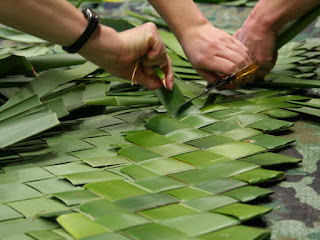Culturally responsive pedagogy - mahi tahi kotahitanga
Mahi = work
kotahitanga = working together
ERO: "Mahi tahi (or mahi ngātahi) describes the unity of a group of people working towards a specific goal or on a specific task, often in a hands-on fashion.
In the school context, mahi tahi describes the business of working together collaboratively in the pursuit of learner-centred education goals. ....."
At Tamaki College, staff are working together to raise student achievement in NCEA. I am on the Change Committee which meets every few weeks. We are a group of innovative educators who try to find different ways of approaching the challenge. We discuss and work on this sitting around the table eating brain food and then take it back to our respective PLuG groups for the group to share strategies and ways of working that have helped reach the achievement goals for priority students. It seems to be working because the list of priority students has become shorter as students go from no credits (red) to some credits (green). I lead one of the PLuG groups. To do this I attend a meeting of the Change Group prior to the meeting. We look at the updated NCEA data in respect of the priority students and then collaboratively discuss what we will do in the PLuG groups the next day. This sharing of strategies that have worked with priority students is a valuable tool in lifting the achievement of these students.
kotahitanga = working together
ERO: "Mahi tahi (or mahi ngātahi) describes the unity of a group of people working towards a specific goal or on a specific task, often in a hands-on fashion.
In the school context, mahi tahi describes the business of working together collaboratively in the pursuit of learner-centred education goals. ....."
At Tamaki College, staff are working together to raise student achievement in NCEA. I am on the Change Committee which meets every few weeks. We are a group of innovative educators who try to find different ways of approaching the challenge. We discuss and work on this sitting around the table eating brain food and then take it back to our respective PLuG groups for the group to share strategies and ways of working that have helped reach the achievement goals for priority students. It seems to be working because the list of priority students has become shorter as students go from no credits (red) to some credits (green). I lead one of the PLuG groups. To do this I attend a meeting of the Change Group prior to the meeting. We look at the updated NCEA data in respect of the priority students and then collaboratively discuss what we will do in the PLuG groups the next day. This sharing of strategies that have worked with priority students is a valuable tool in lifting the achievement of these students.


Comments
Post a Comment